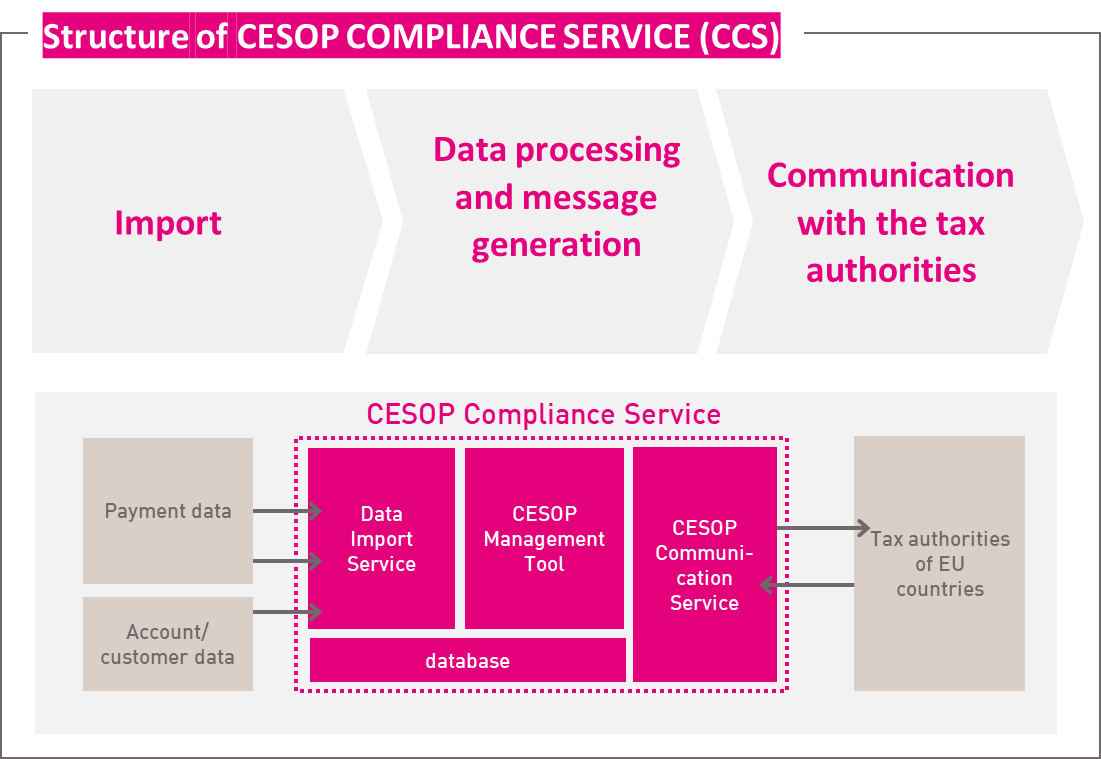By Christine Wieland
In-house solutions and simple tools often reach their limits when it comes to CESOP reporting. Sustainable implementation requires more than just technical output.
Many institutions have been working intensively on the regulatory requirements for CESOP over the past few months. The reporting lines have been set up, technical processes have been established and the first quarterly reports have been submitted. However, as it turns out, formal implementation does not automatically mean stable and low-cost operational practice. Provisional in-house developments or barely integrated stand-alone solutions that only focus on the minimum regularly reach their limits – especially when specifications or interfaces change, there is room for interpretation or returns do not meet expectations.
The implementation of CESOP is complex – not necessarily in theory, but definitely in practice. Numerous institutions report challenges that only become apparent during operation: unclear feedback, discrepancies in the reporting authorities’ interfaces between test and productive behaviour, or reports that are rejected without a comprehensible reason. This is precisely when solutions are needed that are not only technically correct, but also interpretable and customisable.
Information situation: delayed and incomplete
A key problem is the limited availability of reliable information. As the official documentation for the DIP interface from the Federal Central Tax Office is only available in German, this poses an additional challenge for institutions with English-speaking business analysts or development teams, as automated translations do not offer sufficient security to interpret specifications without risk.
Updates to the technical framework conditions are also not always made with the necessary transparency or lead time. For example, the BZSt went live with a new software version to support the CESOP User Guide on 15 January 2025 – without informing anyone in advance. The corresponding publication on the website only took place a week later. This poses a considerable operational risk for institutions that rely on manual processes or in-house developments, as even minor deviations or outdated schemas can lead to report rejections, the causes of which cannot be easily identified.
Test and production behaviour: not identical
In addition, the test and production environments do not always behave in the same way. While the response messages to CESOP messages are only provided in the new XSD format 4.03 in the BZSt test environment, for example, even if the message was still sent on the basis of 4.02, a version-compliant response is still provided in the production environment. If you are not aware of this, you may unnecessarily search for errors during the test phase or draw the wrong conclusions for the productive implementation.
Error returns: difficult to interpret
Another practical stumbling block can be seen in the processing of returns. In one specific case, a report that was created with exactly the same software configuration as in previous quarters was suddenly rejected with a generic error code (“E9999 – other error”). The cause was a technical change in the way XML namespaces had to be set in the report – information that was not communicated in advance. For many institutions, such details can only be understood with considerable effort and require continuous monitoring and maintenance of the interface.
Resilient implementation needs more than XML output
These examples show: A CESOP solution must do far more than simply create compliant XML files. It has to react reliably to format changes, interpret returns correctly, categorise differences between the test and production systems and deliver consistent results even under dynamic conditions. Those who rely on a self-developed or under-complex solution are often forced to make regular manual adjustments – an effort that increases with every change.
The CESOP compliance software solution from DPS offers a tried-and-tested way of combining regulatory requirements with technical flexibility. It not only ensures that the reporting data is processed in accordance with the regulations, but also reacts reliably to current changes – be it through short-term format changes, adjustments to the feedback behaviour or technical details such as the precise handling of namespaces.

Our conclusion after several CESOP quarters
CESOP is not a one-off project, but a continuous process that requires maximum precision, flexible adaptability and constantly up-to-date expertise. If you want to manage notifications efficiently and in an audit-proof manner in the long term, you should not rely on short-term, minimalist approaches, but on a solution that takes both professional requirements and technical developments into account. This is the only way to consistently avoid errors, process returns in a targeted manner and integrate new requirements into ongoing operations at an early stage.










